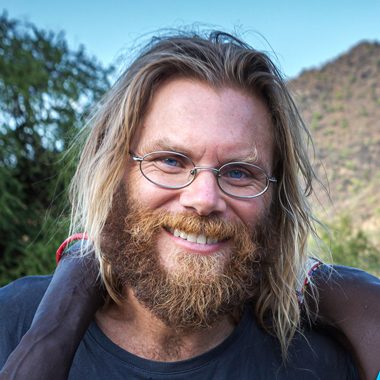The Nenets reindeer herders, one of the Siberian nomadic groups that best preserved their culture and way of life throughout the Soviet period, move their herds across the Yamal Peninsula, near the Ural Mountains. With the arrival of the Great Winter, they move their herds, some numbering over 10,000 head, beyond the tundra north of the Ob River, into the coniferous forests to the south.
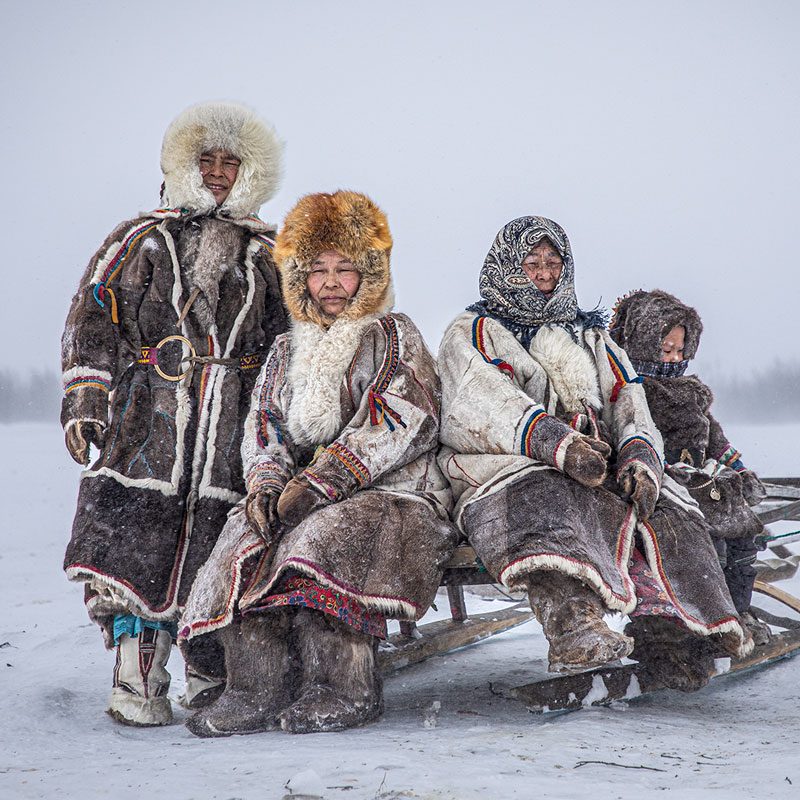
Population
According to the 2025 All-Russian Population Census, the total Nenets population is 49,787 people.
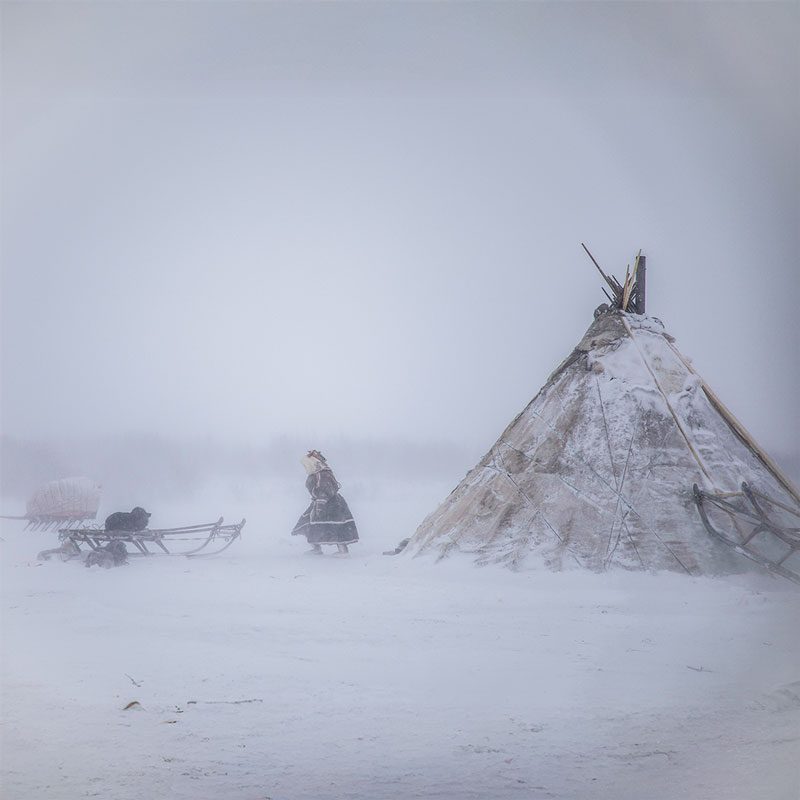
Nenets ecosystem
The Yamal Peninsula: a vast expanse of peatlands stretching from northern Siberia to the Kara Sea, well above the Arctic Circle. To the east lie the shallow waters of the Gulf of Ob; to the west, the Baydaratskaya Bay, covered in ice for most of the year.
In the language of the indigenous Nenets, Yamal means "the end of the world." It is a remote, windswept land of permafrost, meandering rivers, and dwarf shrubs, and has been home to the Nenets reindeer herders for over a thousand years.
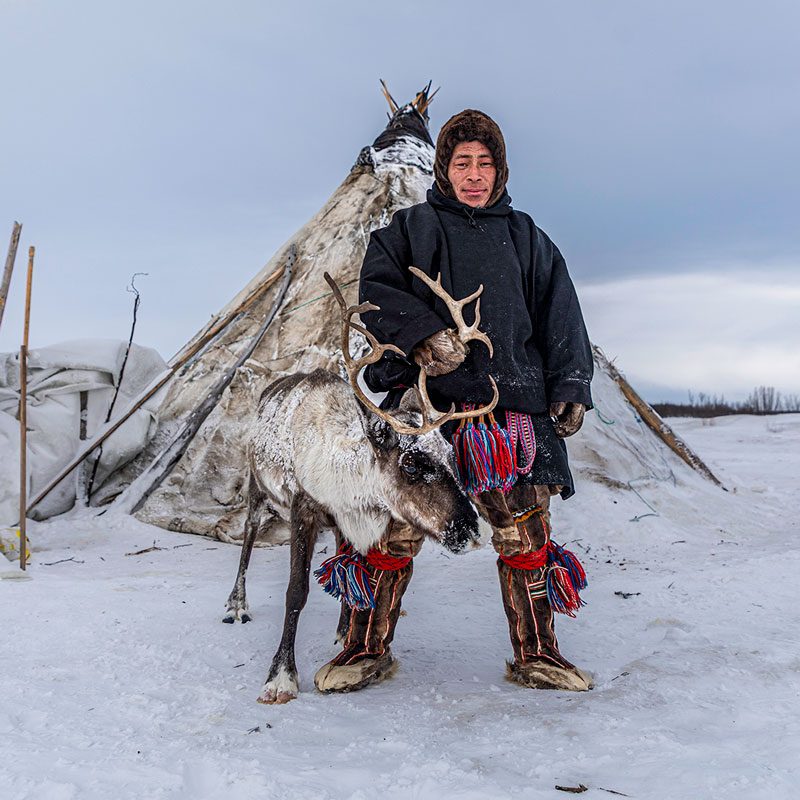
Economy of the Nenets
The Nenets are nomadic reindeer herders. They have always moved their reindeer seasonally, traveling along ancient migratory routes.
During the winter, when temperatures can plummet to -50 degrees Celsius, most Nenets let their reindeer graze on the moss and lichen of the southern forests, or taiga. In the summer months, when the midnight sun turns night into day, they leave the larch and willows behind to migrate north. By the time they cross the icy waters of the Ob River and reach the treeless tundra on the shores of the Kara Sea, they may have traveled as much as 1,000 kilometres.

Social organization
Nenets social organisation is based on the nuclear family and nomadic migration in groups. Each member of a community plays a vital role in survival under the harsh Arctic conditions. Families, often composed of several generations, live together in the chum, their traditional dwelling made of reindeer hides and wood. Their lives revolve around reindeer herding, which they depend on for food, transportation (by sled), and clothing.
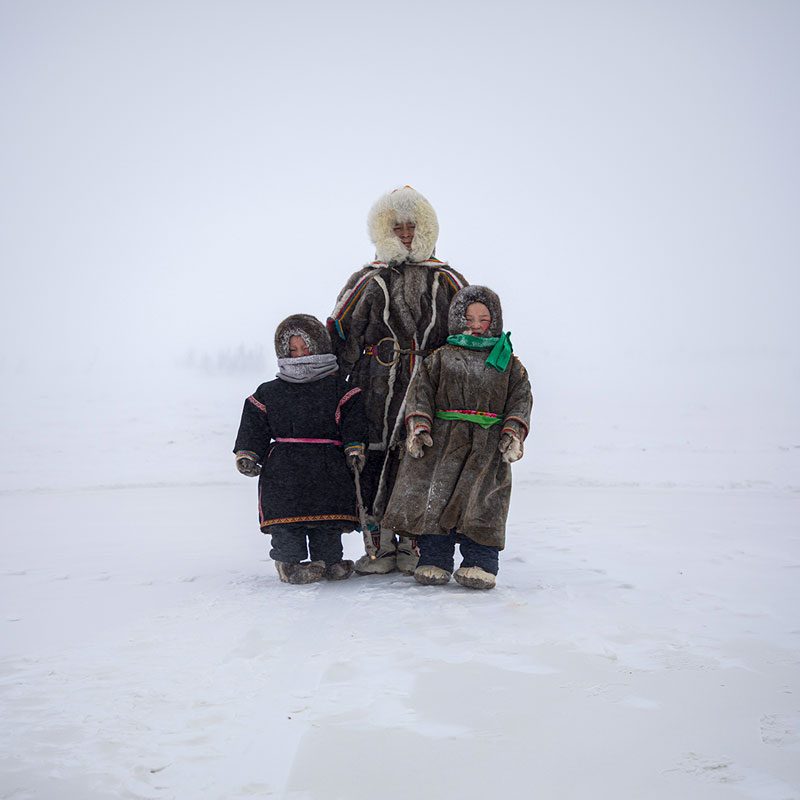
Do you want to meet the Nenets?
Join us on our upcoming trip to Siberia from 28th March to 5th April 2026, and experience the reality of the Nenets people. Click here to discover all the details of this trip.
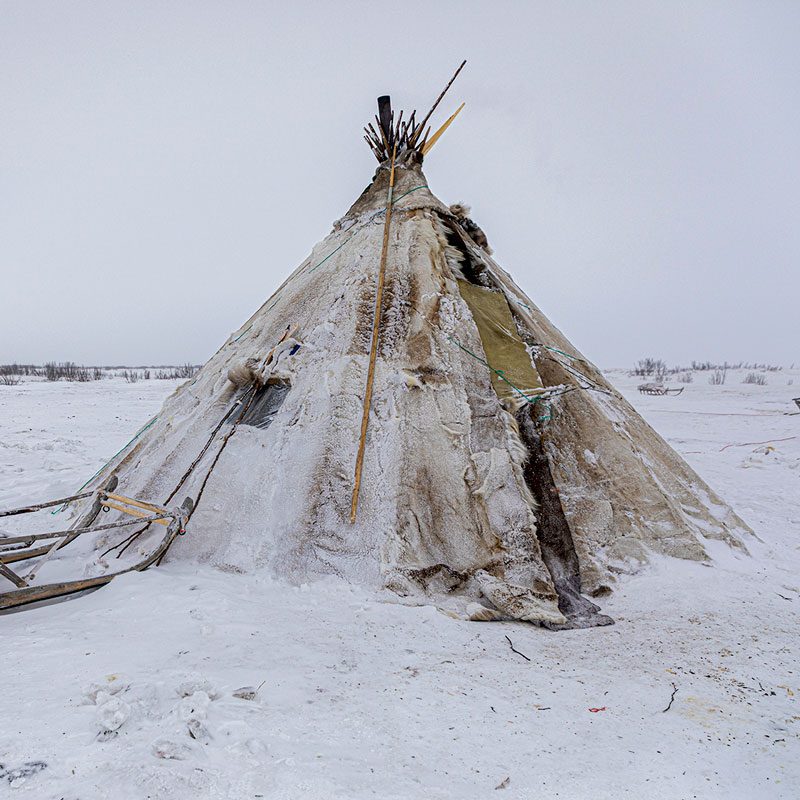
Nenet art and architecture
The Nenets dwelling is the chum, a space where they live and work. It is made, of course, from reindeer hides stretched over a framework of long wooden poles, many of which have a specific position and are not interchangeable. Generally, a family lives in each chum, and the number of chums depends on the size of the encampment. The chosen location always depends on the available resources: pasture, water, and firewood; but also on their beliefs. When the head of the family finds the ideal spot, he plants the khorei, the reindeer-herding pole, in the ground: this will be the center of the chum.
The space inside and outside the chum is always arranged in the same way. Sleds and caravans are arranged in semicircles around the chum, with the supply sleds and women's belongings placed in front of or near the door, which is also their work area. The men's things are kept at the back, which is where they also usually work. Finally, the sacred sled is always placed at the back of the chum, pointing towards its center. The latrines are located away from the camp, and the men's and women's facilities are separate.
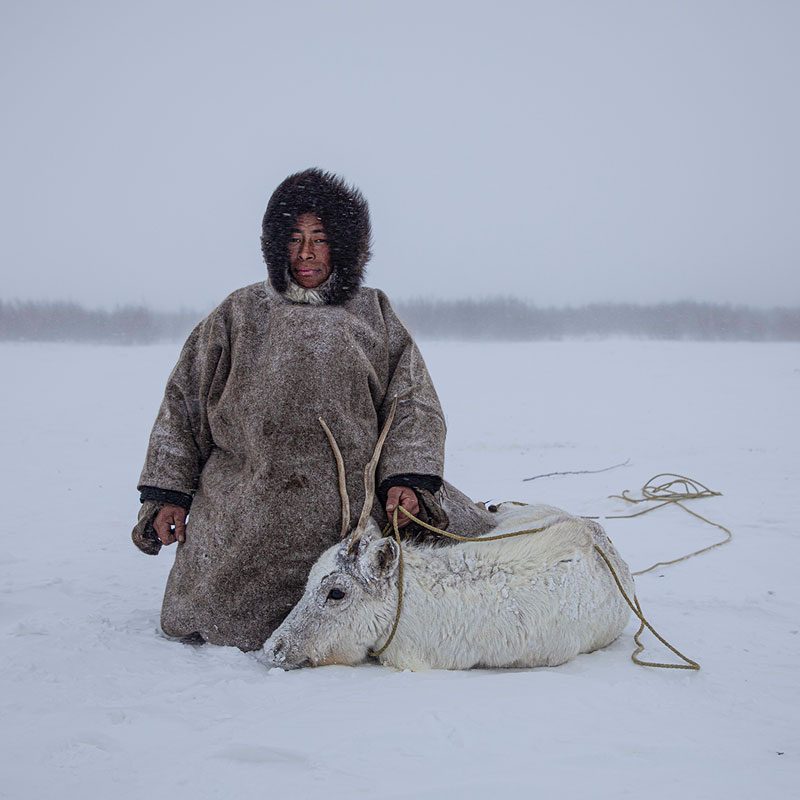
Nenets aesthetics and beliefs
The Nenets still rely on their traditional clothing, which is made by the women. The men wear the malitsa, a cloak made from four reindeer hides, with the fur closest to the skin on the inside and the leather on the outside. It has a hood and mittens integrated into the garment. In extreme cold, they wear another layer over it: the gus, which has the leather on the inside and the hide on the outside. A man can then stay outside all night and sleep with the herd in temperatures below -50°C. The women wear the yagushka, which has a double layer of fur, made from eight reindeer hides and tied in the front. Finally, both men and women wear hip-high boots with an inner layer (tobaki) and an outer boot (kisy).
Although heavily influenced by Orthodox Christianity following the forced conversion of 1824, traditional beliefs have been partially preserved into the 21st century. Num is considered the supreme god who dwells in all natural elements and embodies all atmospheric phenomena. Formless and never depicted, he is especially worshipped in the tundra twice a year during spring and autumn celebrations, when large white reindeer are typically sacrificed. Among the tribes that converted to Christianity, the ancient god of their ancestors has been replaced by the figure of Saint Nicholas, whom they called Mikkulai, an object of profound veneration.
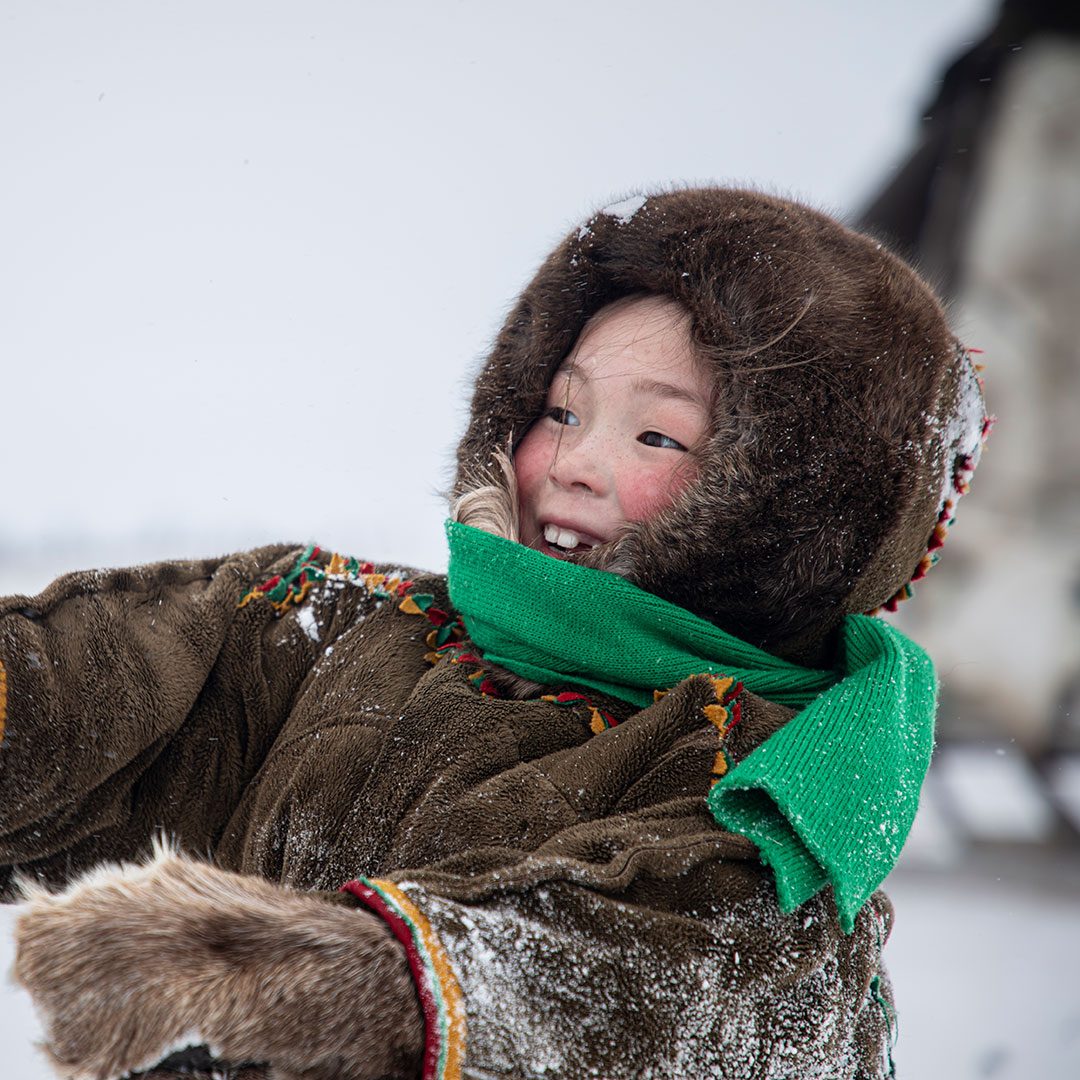
Challenges of the Nenets
Currently, the Nenets migration route is being disrupted by infrastructure associated with resource extraction; the reindeer have difficulty crossing roads, and they say pollution threatens the quality of the pastures.
Preparations for what is known as the Yamal Megaproject (a long-term project to exploit the peninsula's gas reserves, developed by the Russian gas company Gazprom) began in the 1990s. The first gas delivery from the enormous Bovanenkovo field happened in May 2012. Each year, billions of cubic meters are transported to Europe via pipeline.
The Nenets have faced the threat of extinction before: they have endured the challenges of colonial incursions, civil war, revolution, and forced collectivisation. Today, their pastoral way of life is once again under serious threat. Under Stalin, indigenous communities were divided into groups known as brigades and forced to live on collectivised farms and in villages called kolkhozes. Each brigade was required to pay taxes in the form of reindeer meat. Children were separated from their families and sent to government-run boarding schools, where they were forbidden to speak their own language.
With the fall of communism, young adults began leaving their communities for the cities, a trend that continues today. In urban environments, it is nearly impossible for them to adapt to a life removed from the cyclical rhythms of the tundra. They suffer from high rates of alcoholism, unemployment, and mental health problems. For the Nenets, who are still nomadic, their lands and herds remain vital to their collective identity. The land is everything to them.
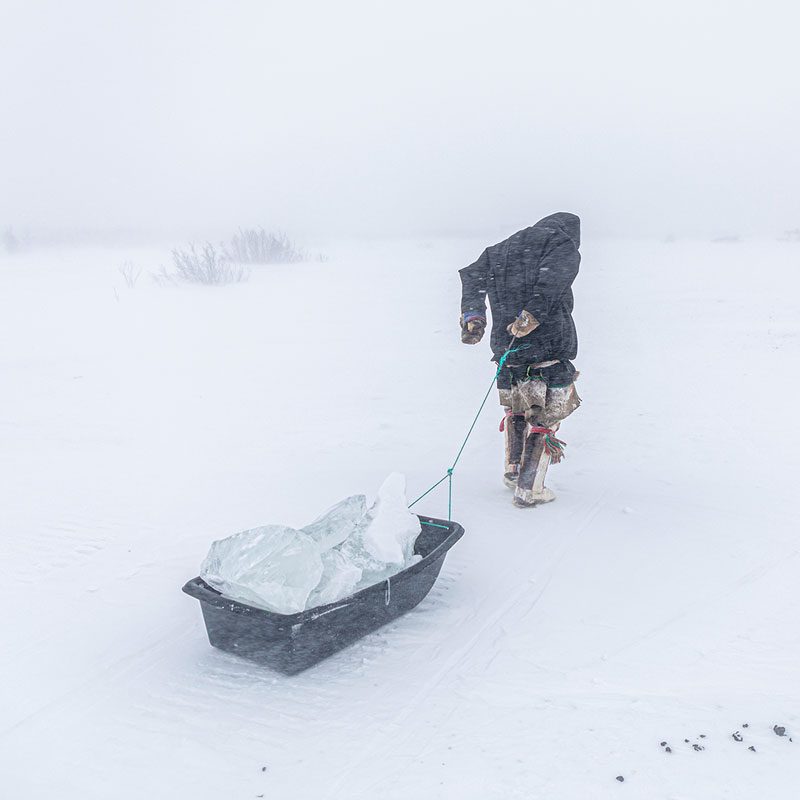
© Photos by Aníbal Bueno taken during a trip to Siberia.
